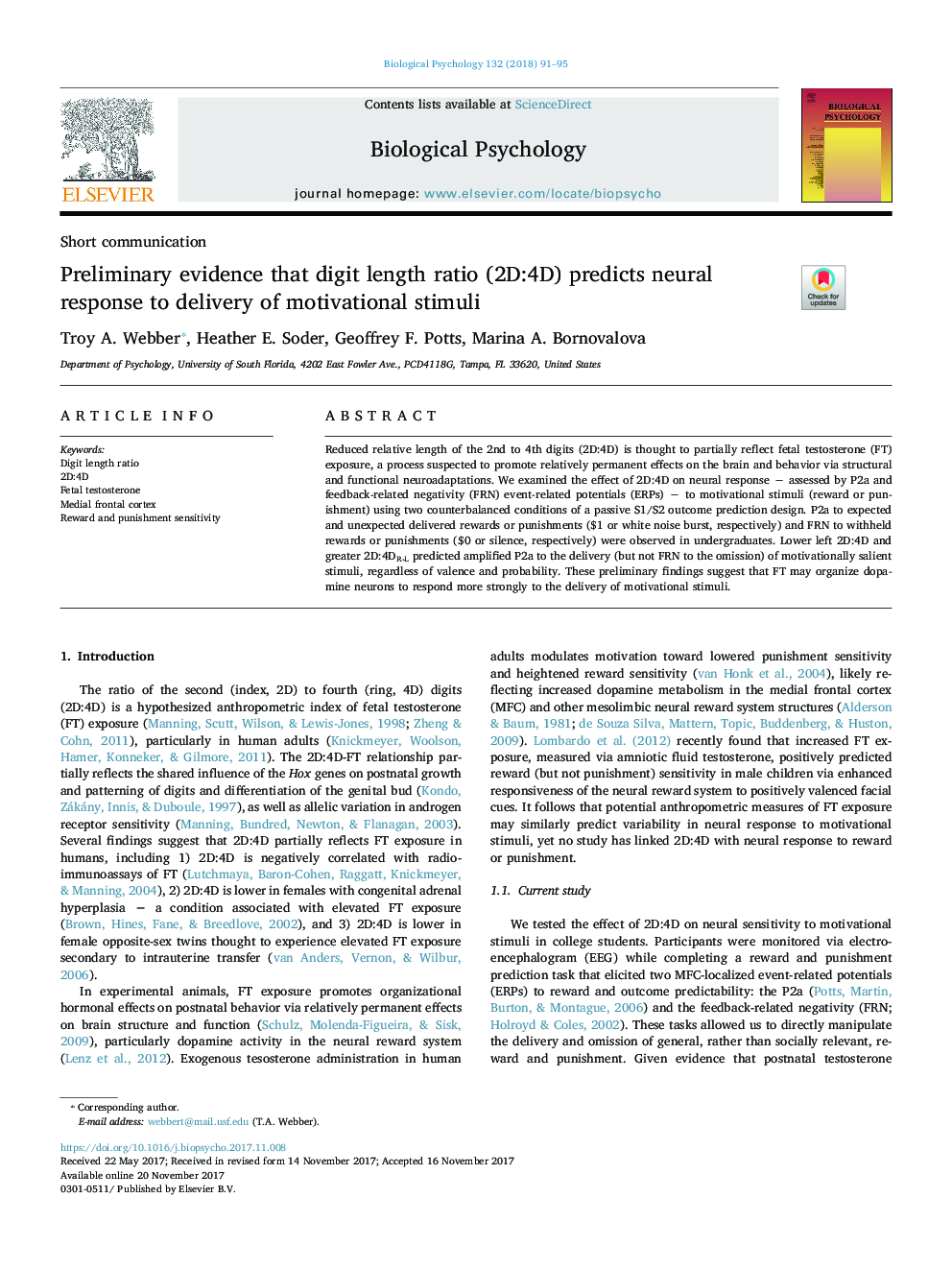| کد مقاله | کد نشریه | سال انتشار | مقاله انگلیسی | نسخه تمام متن |
|---|---|---|---|---|
| 7278199 | 1473842 | 2018 | 5 صفحه PDF | دانلود رایگان |
عنوان انگلیسی مقاله ISI
Preliminary evidence that digit length ratio (2D:4D) predicts neural response to delivery of motivational stimuli
دانلود مقاله + سفارش ترجمه
دانلود مقاله ISI انگلیسی
رایگان برای ایرانیان
کلمات کلیدی
موضوعات مرتبط
علوم زیستی و بیوفناوری
علم عصب شناسی
علوم اعصاب رفتاری
پیش نمایش صفحه اول مقاله

چکیده انگلیسی
Reduced relative length of the 2nd to 4th digits (2D:4D) is thought to partially reflect fetal testosterone (FT) exposure, a process suspected to promote relatively permanent effects on the brain and behavior via structural and functional neuroadaptations. We examined the effect of 2D:4D on neural response â assessed by P2a and feedback-related negativity (FRN) event-related potentials (ERPs) â to motivational stimuli (reward or punishment) using two counterbalanced conditions of a passive S1/S2 outcome prediction design. P2a to expected and unexpected delivered rewards or punishments ($1 or white noise burst, respectively) and FRN to withheld rewards or punishments ($0 or silence, respectively) were observed in undergraduates. Lower left 2D:4D and greater 2D:4DR-L predicted amplified P2a to the delivery (but not FRN to the omission) of motivationally salient stimuli, regardless of valence and probability. These preliminary findings suggest that FT may organize dopamine neurons to respond more strongly to the delivery of motivational stimuli.
ناشر
Database: Elsevier - ScienceDirect (ساینس دایرکت)
Journal: Biological Psychology - Volume 132, February 2018, Pages 91-95
Journal: Biological Psychology - Volume 132, February 2018, Pages 91-95
نویسندگان
Troy A. Webber, Heather E. Soder, Geoffrey F. Potts, Marina A. Bornovalova,